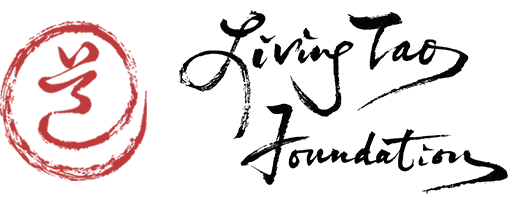Tai Ji and How the Body Understands by Robert Moody
I remember a saying attributed to the Buddha: `there is only one taste to my teaching and that is the taste of freedom’. To participate in a workshop of Chungliang Al Huang is to savour this very same taste in a very direct way for oneself.
Fresh from my fourth workshop with Chungliang, some thoughts seem to be distilling their way into my consciousness. What lies behind his remarkable style of teaching, and why does it point so directly to this savouring of the true taste of freedom?
For some reason three fancy sounding words, all beginning with the letter S have been running through my mind: syntax, semantics, and somatics. Syntax is a word that is used to describe the aspect of language which relates to its rules of assembly (i.e., its grammar). Syntax is the collection of rules by which we form proper sentences in language. Language here ought to be taken in its broadest way, wherever there is a formal and abstract representation of information.
Semantics is the meaning. The formal language carries no meaning. The sentence can be grammatically perfect and incomprehensible (the novel past will sound purple in the snorted umbrella). The semantics is something very different, and far more subtle. Computers are masters at syntax (and demanding ones at that), yet are pathetic at having any sense of meaning. This is not really an indictment of computers or the people who write code for them. The brain does not work like a digital computer and our understanding of how semantics is attached to formal language is still rudimentary. But more of that below.
These two ideas are familiar to anyone interested in information and the puzzle of how human beings assign meaning to experience. The third word is not so familiar. In fact, in the way I am using it, it is not a word at all. Somatics is a noun that I am creating out of the adjective somatic, which refers to the body and its senses in their most physical form. So somatics bears the same relationship to somatic as semantics does to semantic. Now it seems to me that somatics is a necessary, and totally underrepresented complement to syntax and semantics. It is increasingly clear that body sensations are the primary source for the meaning we bring into language. Rather than argue this in a abstract way, it is best just to witness how the teaching goes.
Every workshop with Chungliang begins at the very beginning. Even those who have been with him for years enjoy this process of beginning again at the very beginning. It brings us back from all our head learning and pretensions about our own progress to the essence of tai ji: just moving. The first thing, sky above! Legs apart. hands reach out to connect with the great source of energy, both metaphorically and in reality: the heavens.
Next Earth below. Hands push down to connect into the root of being, the very foundations on which our bodies stand. Follow by stepping back and opening up to the world around us; opening the heart to the entirety of the place where we are in this moment, the domain of our living. And so it goes. These most elementary steps and gestures bring awareness of the body’s movement to the feelings of the senses within those movements, and begin to generate semantics directly through these powerful metaphors.
What is so totally different here is that there is no syntax. You don’t need syntax to open your arms and look around you. The teaching is simple movement and the connection of the feelings of those movements to our primal understanding of our place in Nature. It is the metaphorical transplanting of physical body senses into mental patterns which imbues these motions with meaning, and at the same time connects abstract correspondences with direct physical feelings. So we see a new path, which in reality is the oldest path of all — somatics to semantics.
Syntax? Chungliang knows that it will come by itself. As children we do not learn to speak by learning syntax, but by connecting to our most basic physical sensations: hunger, pain, warmth, pleasure, and the primal instincts to suck, to crawl, to stand, to laugh. After a while one realizes one has absorbed the syntax without being so aware of it.
We all learn about metaphor in our classes on poetry and come to think of it as a poetic device. But recent work has really shown beyond doubt that metaphor is a fundamental carrier of meaning. If you have not enjoyed this game of seeing how deeply metaphor operates as a vehicle for transfering meaning from the physical world experienced by the senses into the abstract world of words, just take a look at the words in this very paragraph that I am writing. We see words like “beyond”, “work”, “seeing”, look”, “vehicle”, “transfering”, “carrier”, “fundamental”, “rooted”, all of them rooted in physical things and used metaphorically to bring meaning to the more abstract world of ideas. Life as a journey is one the deep metaphors, common to all human languages, which allows extensive mapping of a physical realm of ideas onto a mental one, Amazingly, counterintuitive though it seems, it can be pretty convincingly argued that the meaning in mathematics is fundamentally metaphorical too, linked back to our elemental experiences of the world, the formalism being essentially meaningless (though verifiably correct) strings held together by the syntax of logic. So metaphor as the mapping of physical and visceral systems into more abstract domains is foundational to language and thought. Once one understands this then the picture changes and we see tai ji as a path to deepening meaning through our bodily sensations.
The Tao Te Ching opens with the famous lines:
The Tao that can be spoken of is not Tao
Names that can be given are not absolute names.
It sounds as if the book should end right there: if the Tao is not expressible in words, and if words have no absolute meaning, then where do we stand? If language cannot express our deepest needs, where do we turn? In the beginning was the Word and the Word was with God. Is that true? Tai ji teaches us that in the beginning was a beating heart and a pair of breathing lungs. Our origins are not in the language of words but in the body and its deep memories. In tai ji we see that the body and its senses already know what it is we yearn to know, can already express what it is we need to express. There are no words, just the direct connection: somatics and semantics. Just the tai ji dance.
Tai ji dance? There’s a novelty! Tai ji martial arts yes, but tai ji dance? But Chungliang claims to teach nothing but tai ji dance. People look at it and say, `oh, that’s not tai ji’. Call it what you will, but that’s what it is. Our amazing human capacity to be moved by music is perhaps one of the most profound ways in which non-verbal meaning is generated directly through the body’s sensory system. Try dancing tai ji to a Bach choral, a sublime piece of jazz, or to the words of the Cirque du Soleil’s `Let me fall’. There’s the body-mind connection, and by god, you really feel it. Remember Shiva’s dance? The dance that generates the world. You become that Shiva and that creator.
And, there is one more thing: Chinese calligraphy. No teaching of Chungliang is complete without an excursion into the world of Chinese characters. They are of course fascinating and beautiful all by themselves, and at first I saw this teaching as a way of deepening our understanding of Chinese culture. It is very much that of course, but it took some time for me to realize that there is something deeper here too, for we have again a somatic-semantic correspondence, or I should say we have a set of somatic-semantic correspondences.
Chinese characters catch our attention, because they are beautiful and because they are so much more like pictures than words in alphabetic languages. Of course, at their foundation, they are pictorial. The primary Chinese characters are pictures capturing, often in rather visceral ways, the visual features of the things they represent: tree, sun, moon, child, man, rain, mountain. But just as somatics metaphorically carries meaning into more abstract and intangible domains, in the same way at the next level characters carry associated and more abstract meanings: heart/mind may have its origins in the physical heart, but it gets associated with it all the human qualities that we associate with heart in our own language. The man centred in his tan-t’ien and with his arms and legs stretched out becomes “great”, and “west” is the nest in the tree to which the bird returns as sunset. Further elaboration of characters comes from pairing sounds and concepts to go further into the abstract world of language, so in the end it may be hard to find the etymological roots of a character. But nonetheless, just as we have seen, the ultimate roots of their meanings will be in the physical world we know through our senses.
Still, there is something more than this. To see Chungliang doing calligraphy, and this
is calligraphy in the large, the characters typically being a couple of feet wide and high, is to see a total commitment of body, hand, and mind in dynamic flow. The characters are alive, and to gaze at one, the creation of a few seconds, glistening like the water on a beach after a great receding wave, is to have a palpable sense of flow and energy. So the creation of these characters cannot be separated from their meaning. For the life of me I could not understand for a long while why Chungliang would have us act out the drawing of a character, as if we had any clue as to what that really involved. But the point is that in doing it we engage our own bodies in this dynamics. The truth can be pointed at, but it is we as individuals who have to express it for ourselves. No matter that the virtual character we act out is a calligraphic catastrophe, it is the writing of our heart/mind, not an attempted duplicate of someone else’s.
While I was at Esalen this time I had the very first body massage of my life. Much at the urging of my wife and my friends, I took this, what seemed to me, leap of faith. It is in fact an act of faith or of trust, the sort of trust that we are making every moment of our lives, anyway, but particularly here. What was it like? As I gradually relaxed into a world of silence with only the body’s simple somatic senses to orient me, I felt I had become a canvas for a calligraphy of bodily sensations, running as they were in great sweeps like the shadows of trees swaying in the wind, my body of parts merged into a single entity of sensation. In the end I drifted into sleep.
I would not for a moment presume ever to have reached some enlightened state of a liberated being. To imagine such a thing as some perfect achieved state would be intellectual nonsense anyway. We live in a dynamical world in which every state is a temporary one. But through tai ji we do find access to a deeper world, one closer to our being than we can articulate in words, a world that each time we experience it will seem different, but nonetheless utterly our own, and utterly our home. The taste of freedom!
Passing through three gates

Photograph Robert V. Moody
Independence • Independence Pass, Colorado
